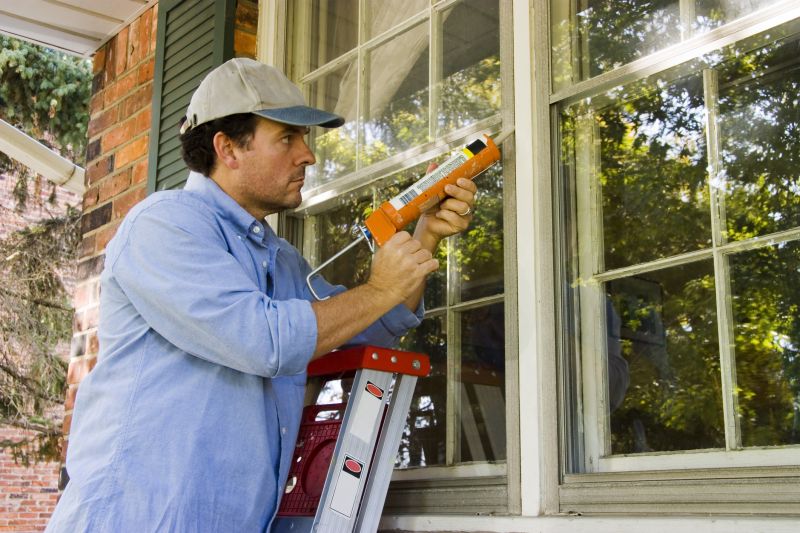Top Products For Caulkings To Ensure Perfect Seals
Explore the leading caulking products designed to deliver durable, professional results for all your sealing needs.
 Caulking products are essential tools for sealing gaps, cracks, and joints in various surfaces around the home and in professional settings. They help improve insulation, prevent water infiltration, and enhance the overall appearance of finished projects. From kitchens and bathrooms to windows and door frames, selecting the right caulking product can make a significant difference in the durability and effectiveness of the seal. There are numerous formulations designed for different materials, including silicone, latex, acrylic, and hybrid options, each offering unique benefits such as flexibility, adhesion, and ease of application.
Caulking products are essential tools for sealing gaps, cracks, and joints in various surfaces around the home and in professional settings. They help improve insulation, prevent water infiltration, and enhance the overall appearance of finished projects. From kitchens and bathrooms to windows and door frames, selecting the right caulking product can make a significant difference in the durability and effectiveness of the seal. There are numerous formulations designed for different materials, including silicone, latex, acrylic, and hybrid options, each offering unique benefits such as flexibility, adhesion, and ease of application.
Top Overall Option
Multi-Purpose Silicone Sealant
A versatile silicone-based sealant that offers excellent adhesion to a variety of surfaces, including glass, metal, and plastic. Known for its flexibility and water resistance, it is suitable for both indoor and outdoor applications, making it a popular choice for sealing gaps around windows, doors, and fixtures. Its smooth application and durable finish help ensure long-lasting results in diverse environments.
Types of Products For Caulkings
Silicone Caulk
Ideal for waterproof sealing in bathrooms, kitchens, and exterior applications, offering flexibility and durability.
Latex Caulk
Eases cleanup and paintability, suitable for indoor projects and general purpose sealing.
Acrylic Caulk
Provides good adhesion and is paintable, often used for interior gaps and cracks.
Polyurethane Caulk
Offers strong adhesion and flexibility, suitable for sealing joints in masonry and concrete.
Fire-Resistant Caulk
Designed to withstand high temperatures, used for sealing around fireplaces and stoves.
Foam Sealant
Expanding foam used to fill large gaps and cavities before sealing with caulk.
Hybrid Sealants
Combine features of silicone and acrylic, offering versatility and ease of use.
Specialty Caulks
Formulated for specific materials like metal, glass, or stone, ensuring optimal adhesion.
High-Temperature Caulk
Suitable for sealing around appliances and fixtures exposed to heat.
Outdoor Sealants
Weatherproof formulations designed to withstand the elements for exterior projects.
Popular Choices
Widely used for various sealing tasks, appreciated for its flexibility and water resistance.
Preferred for interior applications where painting over the caulk is necessary, easy to work with.
Popular for cosmetic repairs and sealing in visible areas, easy to apply and clean.
Chosen for demanding sealing tasks requiring strong adhesion and flexibility.
Used around fire-rated areas, providing high-temperature resistance.
Effective for filling large gaps and cavities before sealing with caulk.
Combines properties of silicone and acrylic for varied applications.
Designed for sealing cracks in bricks, stones, and concrete surfaces.
Suitable for sealing around appliances and fixtures exposed to heat.
Provides durable sealing for outdoor surfaces exposed to weather.
Choosing the appropriate caulking product depends on several factors, including the surface type, exposure to moisture, and the desired curing time. For instance, silicone-based caulks are often favored for their water resistance and longevity in wet environments, while latex or acrylic variants are appreciated for their ease of cleanup and paintability. Proper surface preparation, such as cleaning and drying the area, is crucial to ensure optimal adhesion and a smooth finish. Applying caulk with the right tools, like a quality caulking gun and smoothing tools, can help achieve professional-looking results.
Maintenance and future repairs may also influence your choice of caulking products. Some formulations are designed to be removable or re-sealable, making ongoing upkeep more manageable. Understanding the specific requirements of your project will guide you toward selecting the most suitable product, whether it’s for sealing gaps around windows, filling cracks in drywall, or waterproofing outdoor fixtures. Investing in the right caulking supplies can contribute to longer-lasting, more effective results, ultimately saving time and effort in the long run.
Key Buying Considerations
- Surface compatibility: Ensure the caulk is suitable for the materials you are sealing, such as metal, wood, plastic, or masonry.
- Indoor or outdoor use: Select formulations designed for the environment where the caulk will be applied, considering exposure to moisture and temperature changes.
- Flexibility and elasticity: Determine if the seal needs to accommodate movement or expansion in the joint or crack.
- Curing time: Consider how long the product takes to fully cure and whether that fits your project timeline.
- Paintability: If aesthetic finish is important, opt for caulks that can be painted over after curing.
- Water resistance: For areas exposed to moisture, choose waterproof or water-resistant formulations.
- Ease of application: Look for products compatible with your tools, such as squeeze tubes, cartridges, or foam cans.
- Removability: Some caulks are easier to remove or re-seal, which can be beneficial for future repairs.
- Color options: Available in various colors or clear, select based on the desired aesthetic or concealment.
- Durability: Consider the expected lifespan and resistance to cracking, shrinking, or peeling.
- Temperature resistance: For high-heat areas, choose products rated for elevated temperatures.
- Environmental conditions: Be mindful of UV exposure, humidity, and other environmental factors that may affect performance.
- Environmental safety: Ensure the product meets safety standards if used in sensitive areas.
- Cost and quantity: Balance your budget with the amount of product needed for your project to avoid shortages or excess.
- Brand reputation and reviews: Check for customer feedback and product ratings to inform your choice.
This page contains affiliate links. We may earn a commission if you make a purchase through these links, at no additional cost to you.
